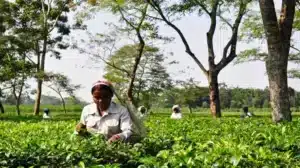Achieving herd immunity for COVID-19 might be difficult without a vaccine, or a whole lot of people getting sick. The latter, though a faster option, is definitely not ideal.
As the world closes in on 17 million cases of COVID-19, there seems to be no respite. Among the many ways that lead out of this seemingly long and dark tunnel, the goal remains the same – protecting the population from the disease, and suppressing the outbreak. And to achieve that, a large population has to attain a state known as ‘herd immunity’.
For COVID-19, as with any other infection, there are two ways to achieve herd immunity – natural infection or protective vaccine. With studies estimating a threshold as high as 70 percent, achieving herd immunity for COVID-19 might be difficult without a vaccine, or a whole lot of people getting sick. The latter, though a faster option, is definitely not ideal.
What does it mean?
Herd immunity is when a large part of the population – the herd – is made immune to an infection, either through vaccination or after being infected naturally. The disease, thus, no longer successfully transmits to new hosts and eventually becomes locally extinct in a population thereby. The rest of the non-immunised population is, as a result, protected from the infection.
How does it work?
The science behind this principle is that a “herd” of immune persons in a community will interrupt the spread of infection and provide an indirect protection to the non-immune.
For a disease to spread, a certain percentage – called ‘threshold proportion’ – of the population must be capable of being infected by it. If the number of people that are immune to this disease exceeds this threshold, the spread of the disease will decline. This is known as the herd immunity threshold.
The percentage of the population that needs to be immune for herd immunity against a disease depends on that disease itself. The more contagious a disease, the greater the proportion of the population that needs to be immune to the disease in order to mitigate subsequent propagation.
How is it measured?
For calculating herd immunity, we need to know the reproduction number or R0, which is a measure of how many people, on average, are likely to be infected by each infected person. An R0 of two means that if the infected person encounters 10 people, two are likely to be infected. Once the R0 of a disease is known, plugging it into the formula of herd immunity threshold would give us the answer to the big question – when does the outbreak start to decline?
However, measuring herd immunity can be tricky. It depends on the number of people that actually get infected and not the average number. And this number varies by location and size of the population sampled for calculations. For COVID-19, studies based on varied R0 calculations have estimated herd immunity thresholds varying from 43 to 70 percent.
What do past encounters reveal?
Infectious diseases, such as measles, mumps, and polio, are some examples where herd immunity was established by the means of vaccines.
In cases of infections without a vaccine, despite many adults developing immunity from prior infection, the disease can still spread among those with weak immune systems. Protection via antibodies from previous infections can also be limited to a short period only.
Besides, not every disease that has a vaccine can be curbed by herd immunity. Tetanus is a telling example. It can be contracted from bacteria in the environment and not from a person. So getting the vaccine is the only protection.
While herd immunity can help stop disease transmission in certain cases – such as swine flu, for instance – within a community, it isn’t guaranteed protection against any disease.
Experts suggest that allowing a large population to get infected, unmitigated, would be based on many unknowns and variables, such as the behaviour of the infection-causing pathogen. Of the 313 treatments and 193 vaccines currently under development for COVID-19, how many make the cut remains to be seen. And for the ones that do make the cut, their impact on inducing herd immunity is yet another unknown.

















